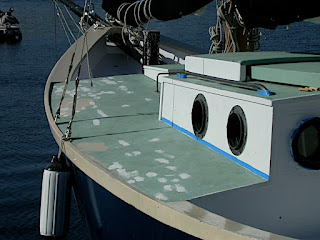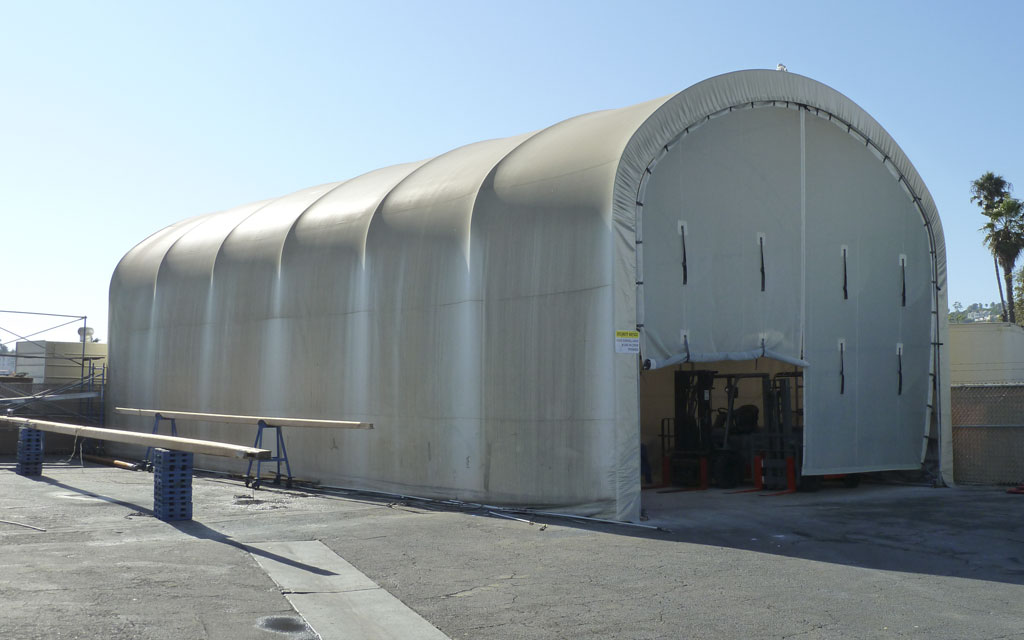Sell a man a boot, you boot him for a while.
Teach a man to boot, you boot him for life.
-- Ancient Chinese saying, sort of
Footwear's Footprint: Problems and a Solution?
As coastal cruisers in temperate climes, we are oppressed by our mountain of footwear.
Here's our current list by type and purpose;
- Rubber Boots – Edge-of-the-water and wet hikes ashore.
Leather Boots – Longer, more rugged hikes.
Hip Waders – Wading for repairs or thin water maneuvers... chest waders would be nice, instead.
Winter Boots – Insulated for cold weather sailing or snow ashore.
Sandals – In and out of water in warm weather... good soles allow doubling as street shoes.
Slippers – Sheerling for lounging and fair-weather sailing, while high soles allow short, wet deck excursions.
Snow Shoes – Snow and occasionally mud.
Times two! Sheesh!! This adds up to a bulky heap o' gear.
Shoes get a lot of wear and tear, and replacing them adds up, over time, to a pretty penny.
If not given prime storage, they tend to mildew, no matter how well cleaned.
Our vital rubber boots, in particular, only last a few seasons at best... we face a choice of carrying a spare set or patching (mixed success) until pulling into a town for replacement. And over the years, they leave a trail of unrecyclable garbage. Can sometimes cut them down to 'garden loafers' and pass out to friends, but most of them are doing the same, themselves.
My hip waders are heavy rubber whose tops fold down and up again, like old-fashioned sea-boots (this makes them near impossible to use with pant-style raingear, and a short rainjacket doesn't cover their tops). While I like them in dry weather, they are too heavy and expensive for general use. Anke uses a lighter set, but they're still not economical for frequent use.
In general, we go for robust treads for afloat/ashore use. Not for us the sliced sole, deck-gripping yacht tread... they just can't cope with a slimy rock or mossy log.
But I've come across some ideas that might help reduce our footprint.
Leather has some distinct advantages, with DIY potential.
Well made, maintained and oiled, leather boots are reliably waterproof. Irving Johnson, in Around the Horn, reports that professional sailors preferred leather sea-boots to rubber. Apparently, they kept feet warmer and overall dryer. I'm guessing it's because rubber doesn't breath, and feet are soon dampened from condensation, even on dry days.
Boot leather is tough stuff. We wear out our resole-able rubber treads, but the uppers just keep on going.
A friend directed me to this brilliant idea:
Make DIY sandals from old tires. Add a moccasin. Add good socks. Go.
This system has been reported to be extraordinarily comfortable on thousand plus mile treks in rugged terrain. In our case, we'd be looking at boot moccasins (or moc + tall, waterproof socks?).
It's a modular system (my favorite), which confers high versatility. Each component can be used separately or in combination. The sandals provide solid, sure, cheap soles to the boot mocs, while the socks layer up to moderate weather.
In our case, we would need the boot leather to be selected, treated and built for waterproof service. At best, waterproofness is pursued from the tanning process on.
To this basic system, I would like to add a roll of light, water-proof or -resistant fabric to the boot top. Waxed cotton, for example, dampens when immersed, but will not flood through. It would normally be worn furled, but could be unrolled as hip-waders. This avoids the weight and volume issues of folded leather. Having them always available would be a big asset.
Insulated overboots from sturdy fabric for cold-weather can be DIYed, again using the sandals for soles. Weather cold enough for insulation is generally dry. With care, these can be used ashore. With luck, the overboot could double as a lounging slipper?
In-soles are a low-profile accessory. Wool insoles provide cushion and insulation from the ground without over insulating the foot above. Specialized insoles increase shock absorption.
The only sticking point is that, while moccasins are easily made by the home craftsperson, waterproof moccasins are not (they can be DIYed, but it's skilled work). There are a few professionals who offer these, custom made, but they cost considerably more than one normally expects to pay for common footwear.
Still, I'm guessing that a custom crafted boot moc will pay for itself with decades of life if faithfully protected by the sandals. We waffle, but my guess is that this is one skill we'll not acquire unless forced by circumstance.
If this works, we'd be down to the modular system and snowshoes...
That's more like it!












